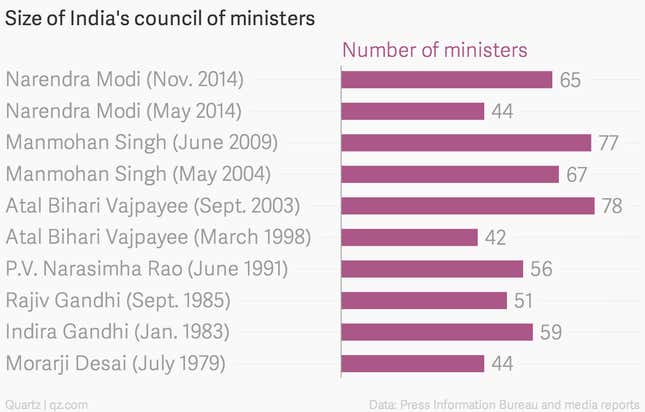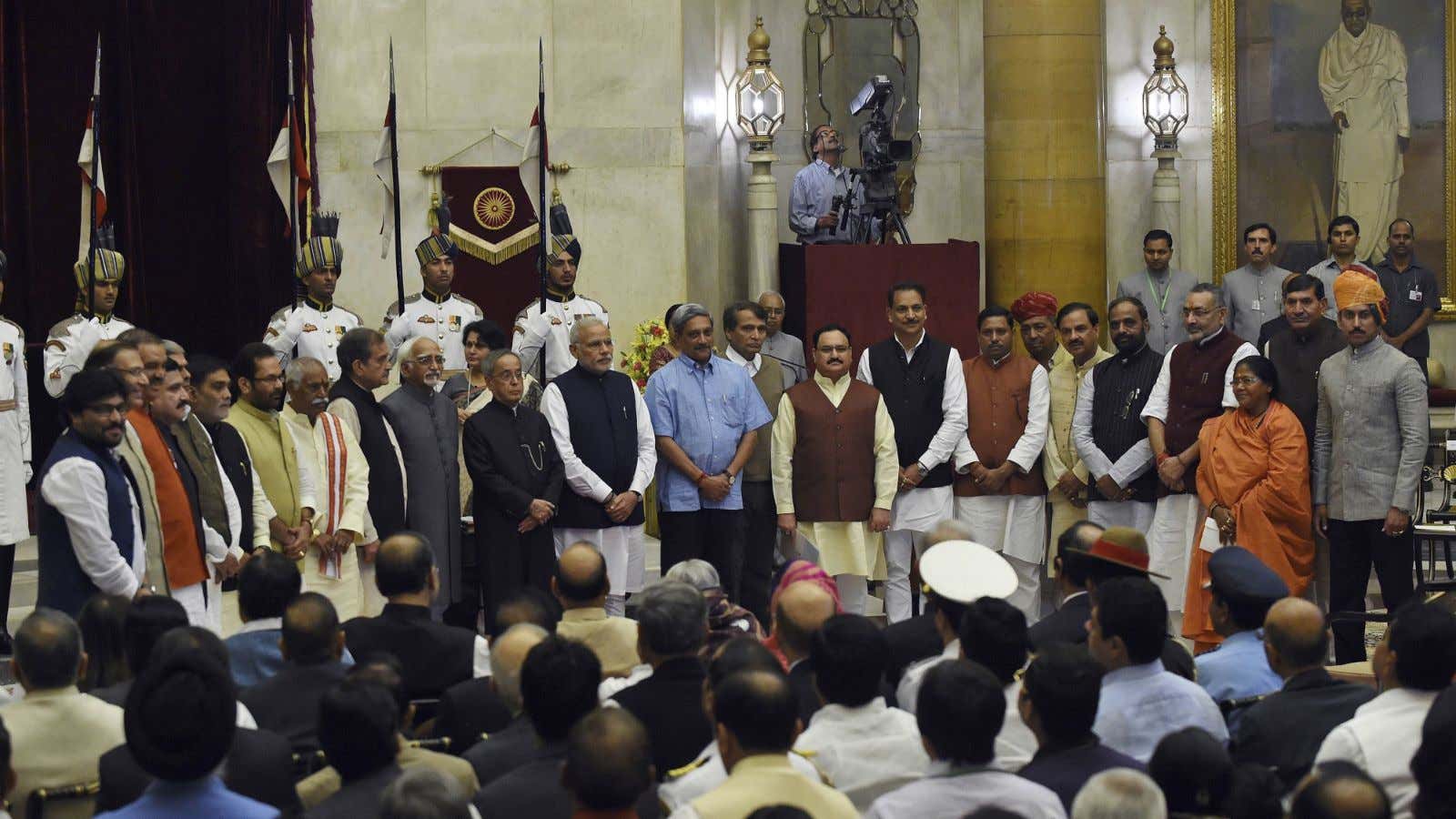After promising a “small yet efficient government,” prime minister Narendra Modi has unveiled a council of ministers that isn’t much smaller than what his predecessor Manmohan Singh had in 2004.
Of the numerous campaign slogans from Modi’s camp in the 2014 general elections, it was his promise of “minimum government, maximum governance” that was particularly alluring to many.
After a decade of the Congress Party-led United Progressive Alliance’s (UPA) bloated council of ministers taking decisions at a glacial pace—that nonetheless turned up scam after scam—the then Gujarat chief minister’s assurance of a lean government became especially desirable.
There was, therefore, much appreciation when Modi swore oath as India’s prime minister in May 2014 and introduced a 44-member council of ministers, including a frugal 16-member cabinet, the smallest such team in 16 years.
But the Modi government’s big reshuffle on Nov. 9 has changed all that.
There are now 65 ministers, including 26 cabinet ministers and 39 ministers of state, in the Bharatiya Janata Party (BJP)-led government. And although it is smaller than the UPA’s ministerial teams, Modi’s council of ministers isn’t actually all that small.

During the election campaign, Modi’s message was simple:
For decades, we have had extraordinarily large governments while ironically the quality of governance has been quite poor. There has been more attention paid to the size of the government and not so much to its quality. Thus, Narendra Modi’s model of a small yet efficient government stands out.
The extraordinary mandate that he subsequently received meant that he could, in theory, implement the idea. Unlike former prime minister Singh’s two terms, during which he was forced to accommodate disparate demands of numerous coalition partners, Modi faced no such compulsions.
The BJP’s massive win in the 2014 general elections (followed by a string of victories in assembly polls) also provided the incumbent prime minister the option to pick and choose his team. He has done so in bringing the Shiv Sena’s Suresh Prabhu into his cabinet despite the party’s disapproval. (Prabhu has since quit the Sena and joined the BJP). Yet, he has also had to induct ministers of state with an eye on assembly elections due in 2015 and 2016.
And like his time in Gujarat, Modi is seen as having a firm grip over his government in New Delhi. He has already enacted a handful of major bureaucratic reshuffles, centralized decision-making by empowering the Prime Minister’s Office (PMO), carefully controlled communications and consolidated his hold over the BJP.
Some of Modi’s new ministers may well thrive under such circumstances. There is a clutch of well-regarded, experienced politicians with established track records. There are also some well-qualified first-time ministers.
At the same time, it could also be more cumbersome to handle a bigger team of ministers, many untested, while charging ahead with reforms.
However, if maximum government actually delivers maximum governance, India is unlikely to complain.
